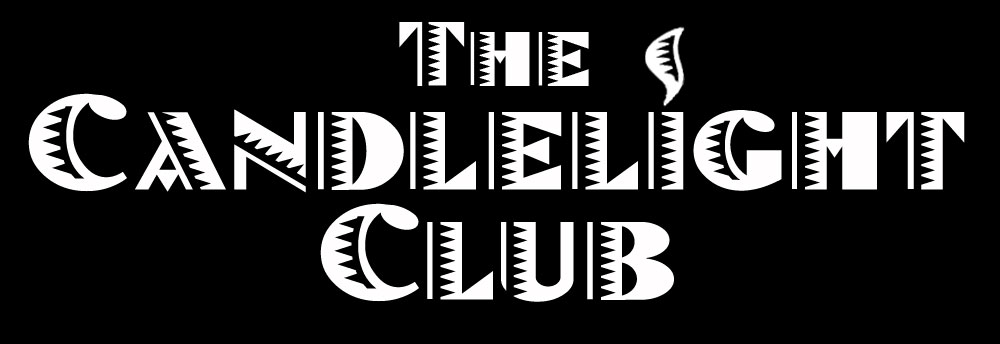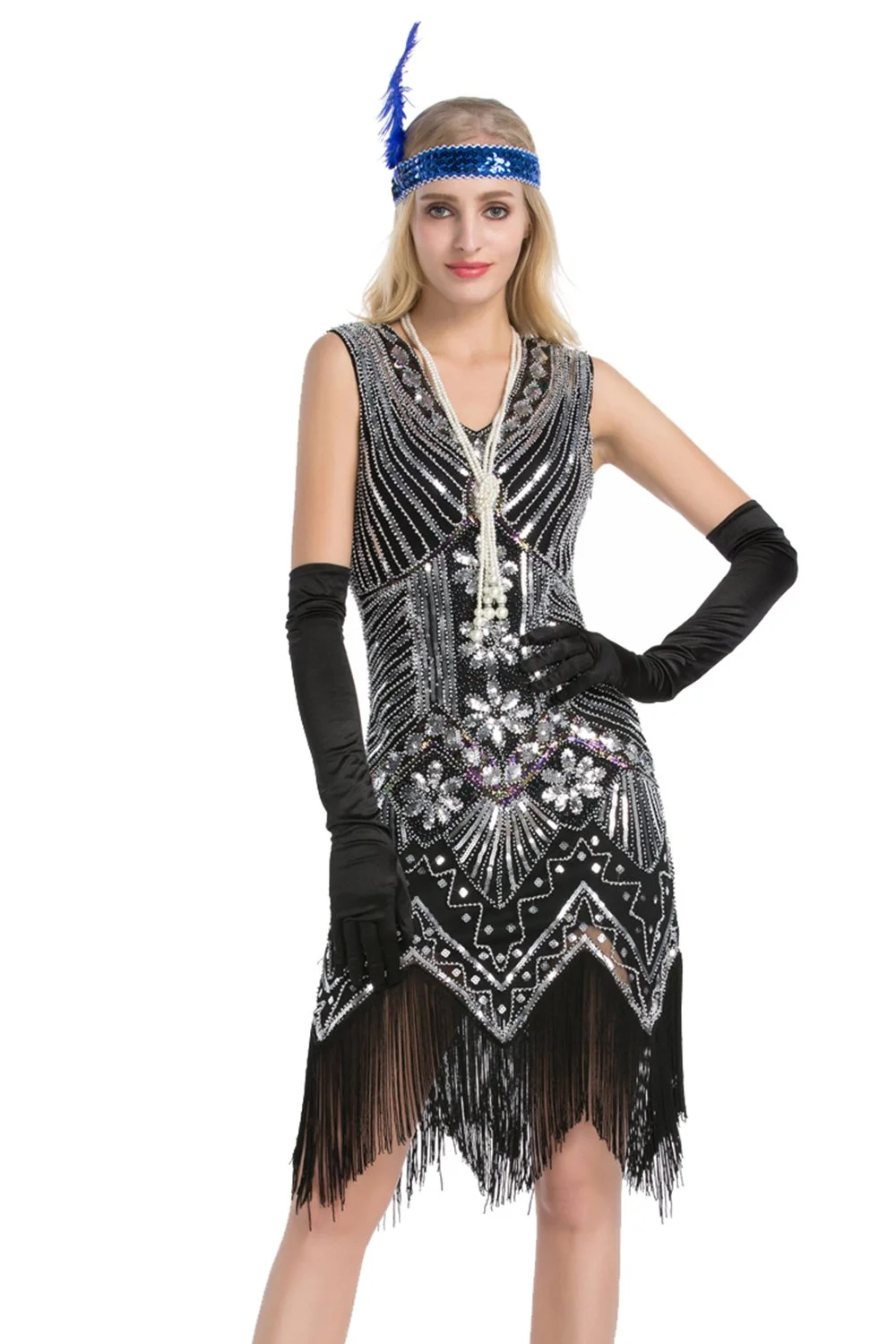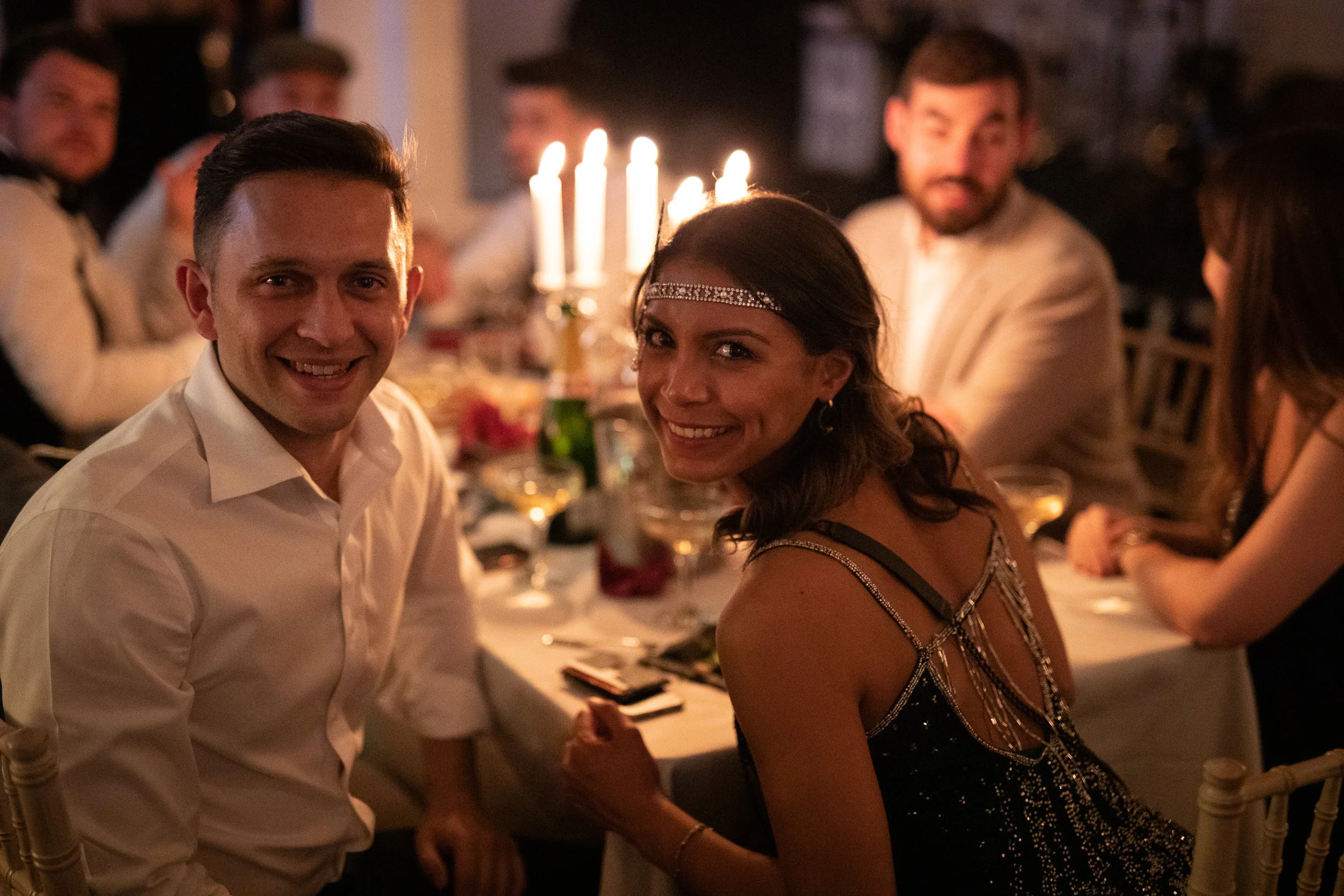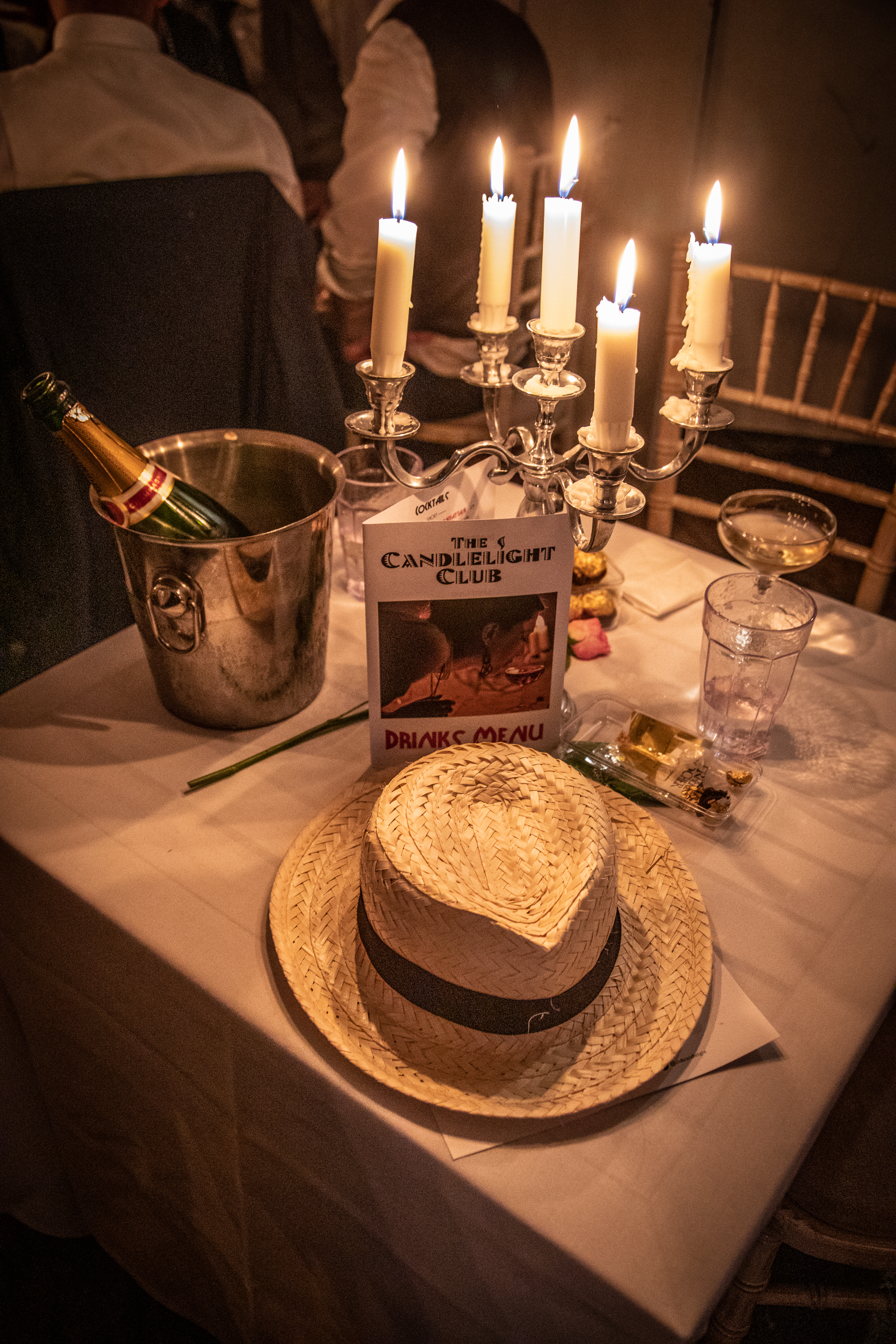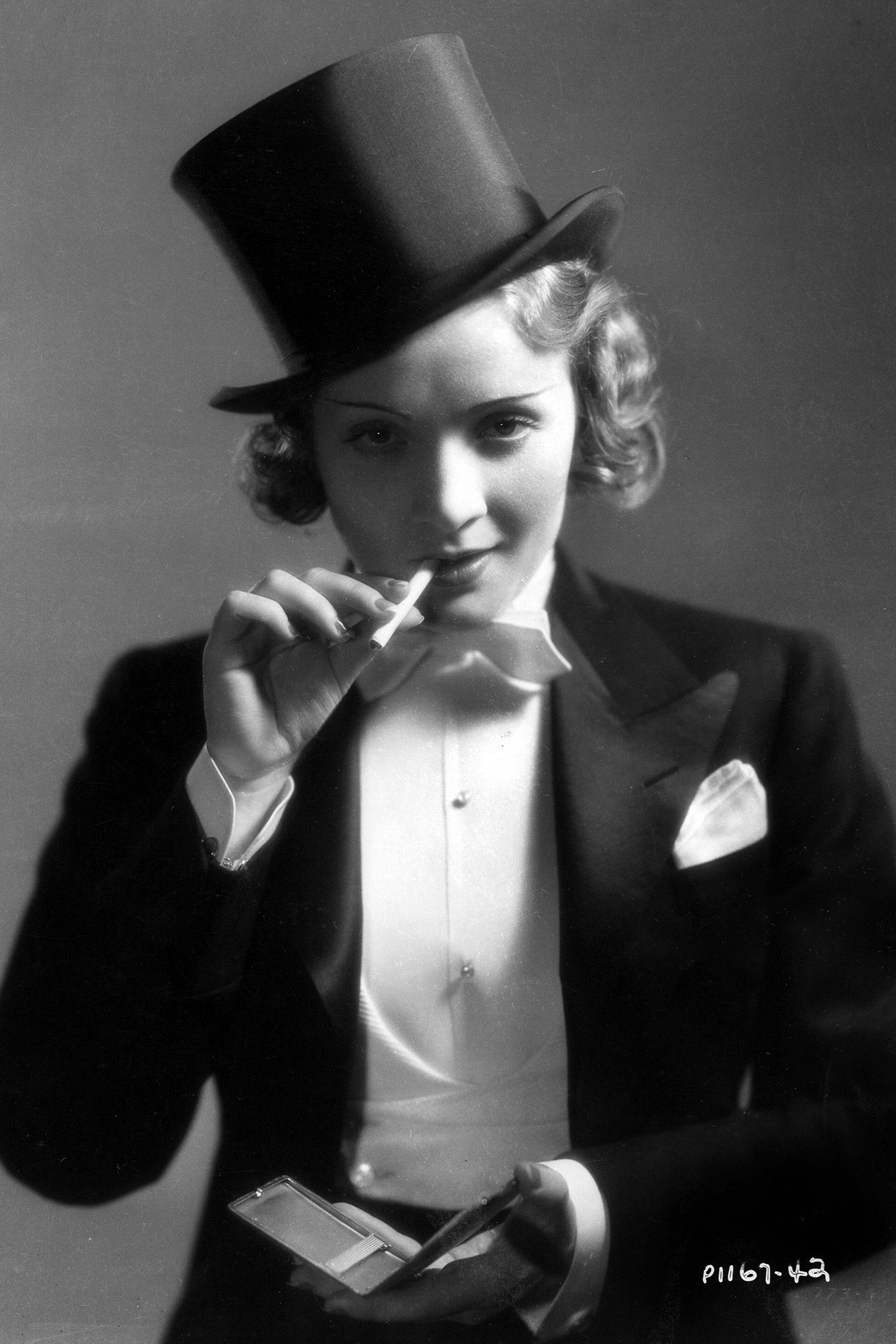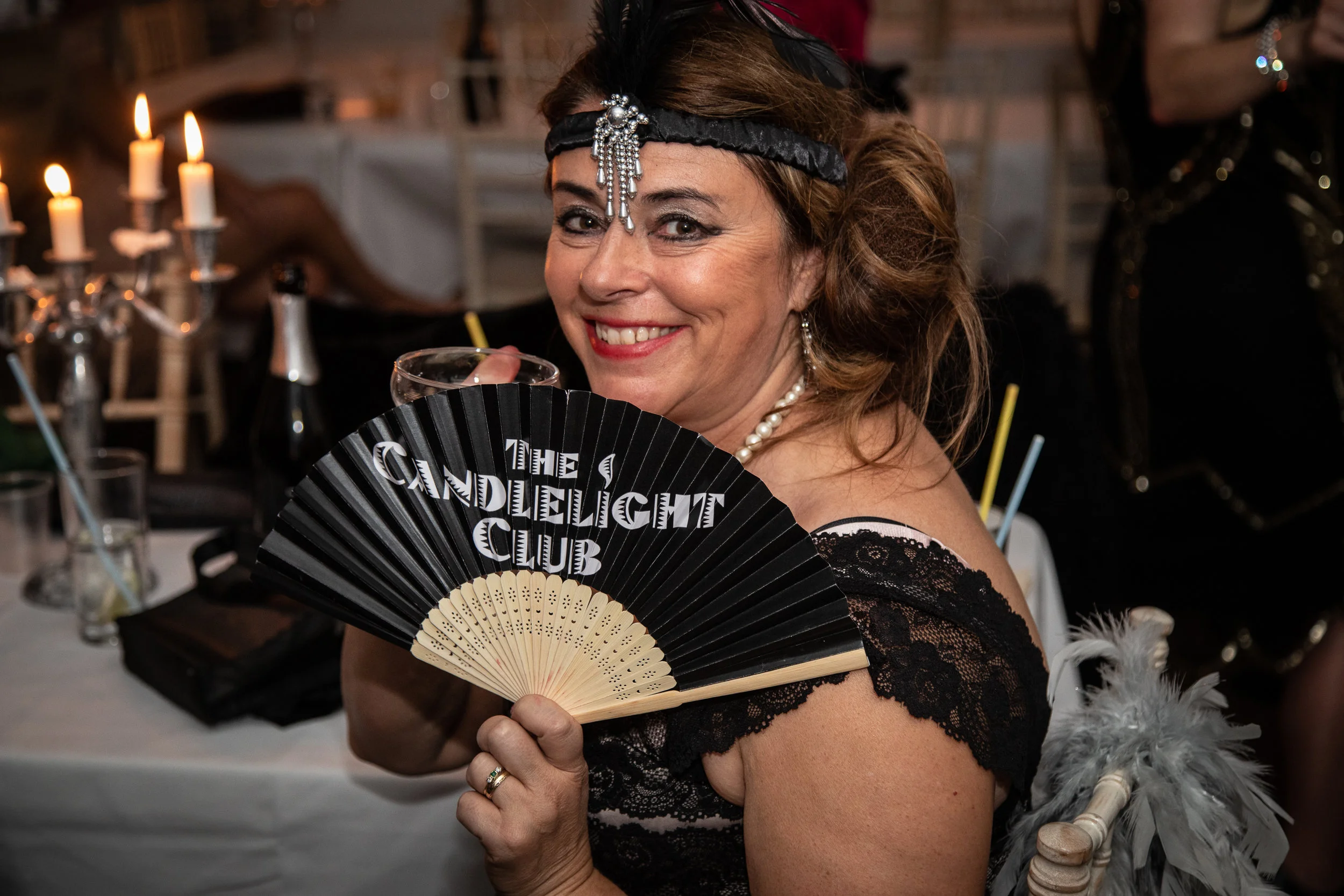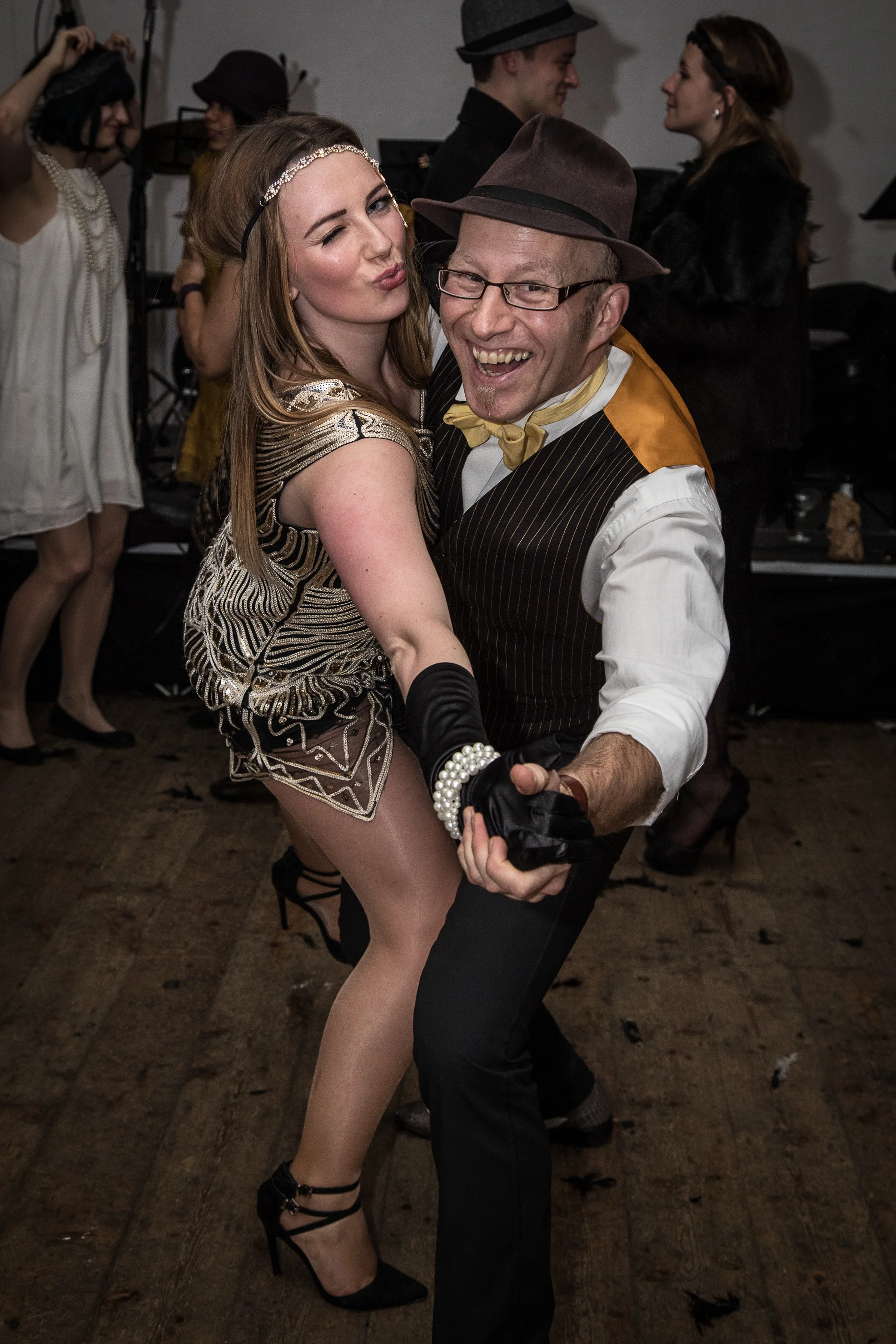The Gatsby Girls and Guys are a 1920s act that will transport you to the ultimate era of sophistication, glitz and glamour. They’ll take you back to the Jazz Age, delighting your senses with the flapper fun and frolics of the speakeasy.
Paige, Jen and Emily founded The Gatsby Girls back in 2013 and they now have over 30 Gatsby Girls and Guys who work for the company.
Vintage lovers through and through, they were instinctively drawn to the period. Their love and fascination for the era continues to grow year after year and they love nothing more than to share their knowledge and passion with others.
They pride themselves on their authenticity. All of their dance moves, costumes and music tracks are pulled directly from the 1920s. When they are looking for or making new costumes, selecting music and choreographing dance routines, they really do their research and gather inspiration using books, old photographs, advertisements, articles, footage, movies and more. This goes for their hair and make-up as well—all of their girls style themselves carefully before an event, ensuring a truly authentic 1920s look.
They’ve performed all over the world, with highlights including The Savoy in London, Glastonbury Festival, Wilderness Festival and the Dorchester.
They are Candlelight Club favourites, having performed for us regularly since 2013—catching them at our forthcoming Halloween Ball as well as our New Year’s Eve party. They also hold workshops and teach guests steps at tonnes of public and private events,
"You were all truly fantastic! Our client was overjoyed with how it all went and we couldn’t be happier." — New Year's Eve, Brasserie Zedel, London
"A BIG BIG thank you for providing the most glamorous entertainment."
— Bridelux - The Savoy, London
They have small series on YouTube teaching dance steps from you 20s:
Links
Website: https://www.thegatsbygirls.com/
Dance Footage: https://www.youtube.com/watch?v=7JDhhh6H2kc
Instagram: https://www.instagram.com/thegatsbygirls/
